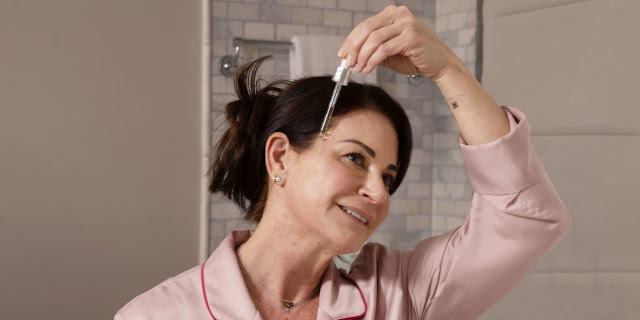
The question we and others have is: Can I use Vitamin C after an AHA? We’ll explore this in more detail, but before we get started, I’ll give you a quick summary of the benefits of these ingredients and how they affect the skin.
Exfoliation from these acids helps loosen the bonds of surface dead skin cells that can make your complexion look dull.
Many skin care experts believe that applying an AHA before applying a vitamin C product provides the best results. This is because the acid removes the buildup of dead skin cells that normally form a barrier on the surface of the skin. Once removed, your vitamin C product will be absorbed quickly and effectively.
Yes, you absolutely can! You will find that applying a high concentration of vitamin C after exfoliating can enhance the activity of the active ingredients and improve the overall look and feel of your complexion. The skin feels firmer and problem areas such as hyperpigmentation and dark spots are visibly reduced.
If you are wondering if vitamin C can be used to exfoliate the skin, the answer is no. However, it does help increase skin cell turnover and bring new, fresh skin cells to the surface. This explains why Vitamin C has a reputation for leaving skin radiant, healthy and bright.
People with sensitive skin may find chemical or physical exfoliants too harsh and experience more severe irritation, redness and increased dryness. This can be avoided if you choose to exfoliate with lactic acid, as this is a gentler AHA. You should then wait at least 30 minutes before applying a Vitamin C serum. Finally, use a moisturizer or serum with hyaluronic acid to lock in the skin’s moisture and reduce the risk of unnecessary dryness and irritation. As an extra precaution, you can also do a 24-hour patch test before applying any products to your skin. This will help you determine if your skin is happy with the active ingredients being applied to your skin, especially if you have never used any of these ingredients before.
Can Vitamin C be used after a BHA?
This is not the case, and this is because BHAs affect the skin differently compared to AHAs. You will find that BHAs (the most commonly used salicylic acid) can penetrate deeper into the skin. This is possible due to their smaller molecular size compared to AHAs. This makes salicylic acid and other BHA ingredients very effective for oily and acne-prone skin as they can penetrate into the pores and remove excess sebum, dirt, bacteria, sediment, and other impurities.
BHAs are known to be very effective and very powerful. When you apply Vitamin C to your skin, you will experience severe irritation, redness, increased sensitivity to light, and severe dryness. For best results without side effects, I recommend alternating each active ingredient. Start your morning routine with Vitamin C as its antioxidant properties protect the skin from daily oxidative stress. Then wear a BHA such as B. Salicylic Acid at night to allow it to penetrate deeply into the lower layers of the skin and work undisturbed while you enjoy your beauty sleep.
Don’t forget to consult your primary care physician or dermatologist if you have any questions about the combination of certain ingredients. Feel free to reach out to us via Instagram. DM team members are always available to answer any skin care questions.


